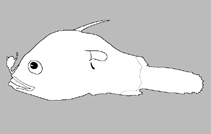http://www.fishbase.org/Summary/speciesSummary.php?genusname=Chirophryne&speciesname=xenolophus ---> http://192.134.151.83/Summary/speciesSummary.php?genusname=Chirophryne&speciesname=xenolophus
http://192.134.151.83/Summary/speciesSummary.php?genusname=Chirophryne&speciesname=xenolophus ---> https://fishbase.mnhn.fr/Summary/speciesSummary.php?genusname=Chirophryne&speciesname=xenolophus
https://fishbase.mnhn.fr/Summary/speciesSummary.php?genusname=Chirophryne&speciesname=xenolophus ---> https://fishbase.mnhn.fr/summary/Chirophryne-xenolophus.html
Chirophryne xenolophus

You can
sponsor
this page
Common name (e.g. trout)
Genus + Species (e.g. Gadus morhua)
-

-
About this page
-
Languages
-
User feedbacks
-
Citation
-
Uploads
-
Related species
-


 Add your observation in
Fish Watcher
Upload your
photos
and
videos
Add your observation in
Fish Watcher
Upload your
photos
and
videos
Google image
 No image available for this species;
No image available for this species;
drawing shows typical species in Oneirodidae.
Teleostei (teleosts) >
Lophiiformes
(Anglerfishes) >
Oneirodidae
(Dreamers)
Etymology:
Chirophryne:
Greek, 'cheir' = hand + Greek, 'phryne' = toad; referring to its elongate pectoral-fin lobe.
.
More on authors:
Regan
&
Trewavas
.
Environment: milieu / climate zone / depth range / distribution range
Ecology
Marine; bathypelagic; depth range 1230 - 1400 m (Ref.
86949
). Deep-water
Western Pacific: Papua New Guinea, Philippines and Japan.
Size / Weight / Age
Maturity: L
m
?
range ? - ? cm
Short description
Morphology
|
Morphometrics
Dorsal
soft rays
(total): 5-6;
Anal
soft rays
: 4. Metamorphosed females distinguished by the following characteristics: presence of vomerine teeth; short frontals, lying posterior to the ethmoid region, convex dorsal margin; extremely well developed sphenotic spines; small symphysial spine on lower jaw; hyomandibula with double head; extremely well developed quadrate spine, four to nearly six times longer than articular spine; deeply notched posterior margin of opercle; short and broad subopercle, dorsal end rounded, ventral end oval in shape; well developed second pharyngobranchial; caudal fin rays without internal pigmentation; illicium longer than length of esca bulb; pterygoiphore of illicium cylindrical throughout its length, emerging on snout from between frontal bones, anterior end slightly exposed, posterior end concealed beneath skin; well developed first ray of dorsal fin; dorsal fin rays 5-6; anal fin rays 4; long and narrow pectoral fin lobe, longer than longest rays of pectoral fin; pectoral fin rays 18-19; skin without dermal spinules; darkly pigmented skin of caudal peduncle extends well past base of caudal fin (Ref.
86949
).
Life cycle and mating behavior
Maturity
|
Reproduction
|
Spawning
|
Eggs
|
Fecundity
|
Larvae
Kailola, P.J.
, 1991. The fishes of Papua New Guinea: a revised and annotated checklist. Vol. III. Gobiidae to Molidae. Research Bulletin No. 41, Research Section, Dept. of Fisheries and Marine Resources, Papua New Guinea. 153 p. (Ref.
6771
)
IUCN Red List Status (Ref.
130435
)
Least Concern (LC)
; Date assessed:
11 October 2018
CITES
Not Evaluated
Not Evaluated
Threat to humans
Harmless
Human uses
FAO - Publication:
search
|
FishSource
|
More information
Countries
FAO areas
Ecosystems
Occurrences
Introductions
Stocks
Ecology
Diet
Food items
Food consumption
Ration
Common names
Synonyms
Metabolism
Predators
Ecotoxicology
Reproduction
Maturity
Spawning
Spawning aggregation
Fecundity
Eggs
Egg development
Age/Size
Growth
Length-weight
Length-length
Length-frequencies
Morphometrics
Morphology
Larvae
Larval dynamics
Recruitment
Abundance
BRUVS
References
Aquaculture
Aquaculture profile
Strains
Genetics
Electrophoreses
Heritability
Diseases
Processing
Nutrients
Mass conversion
Collaborators
Pictures
Stamps, Coins Misc.
Sounds
Ciguatera
Speed
Swim. type
Gill area
Otoliths
Brains
Vision
Tools
E-book
|
Field guide
|
Length-frequency wizard
|
Life-history tool
|
Point map
|
Classification Tree
|
Catch-MSY
|
Special reports
Check for Aquarium maintenance
|
Check for Species Fact Sheets
|
Check for Aquaculture Fact Sheets
Download XML
Summary page
|
Point data
|
Common names
|
Photos
Internet sources
AFORO (otoliths) |
Aquatic Commons
|
BHL
|
Cloffa
|
BOLDSystems
|
Websites from users
|
Check FishWatcher
|
CISTI
|
Catalog of Fishes
:
genus
,
species
|
DiscoverLife
|
ECOTOX
| FAO - Publication:
search
|
Faunafri
| Fishipedia |
Fishtrace
| GenBank:
genome
,
nucleotide
| GloBI |
Google Books
|
Google Scholar
|
Google
| IGFA World Record |
MitoFish
|
Otolith Atlas of Taiwan Fishes
|
PubMed
| Reef Life Survey | Socotra Atlas |
Tree of Life
| Wikipedia:
Go
,
Search
| World Records Freshwater Fishing |
Zoobank
|
Zoological Record
Estimates based on models
Preferred temperature (Ref.
123201
): 2.5 - 3, mean 2.7 °C (based on 17 cells).
Phylogenetic diversity index (Ref.
82804
): PD
50
= 1.0000 [Uniqueness, from 0.5 = low to 2.0 = high].
Bayesian length-weight: a=0.01995 (0.00906 - 0.04395), b=3.01 (2.83 - 3.19), in cm total length, based on all LWR estimates for this body shape (Ref.
93245
).
Trophic level (Ref.
69278
): 3.8 ±0.5 se; based on size and trophs of closest relatives
Resilience (Ref.
120179
): High, minimum population doubling time less than 15 months (Preliminary K or Fecundity.).
Fishing Vulnerability (Ref.
59153
): Low vulnerability (10 of 100).
Back to Search
Random Species
Back to Top
Accessed through:
Not available
FishBase mirror site :
localhost
Page last modified by :
mrius-barile
- 20 July 2016
Fatal error
: Uncaught ArgumentCountError: Too few arguments to function checkEcotox(), 1 passed in /var/www/html/summary/speciessummary.php on line 2304 and exactly 3 expected in /var/www/html/includes/speciessummary.lib.php:2579 Stack trace: #0 /var/www/html/summary/speciessummary.php(2304): checkEcotox() #1 {main} thrown in
/var/www/html/includes/speciessummary.lib.php
on line
2579
|